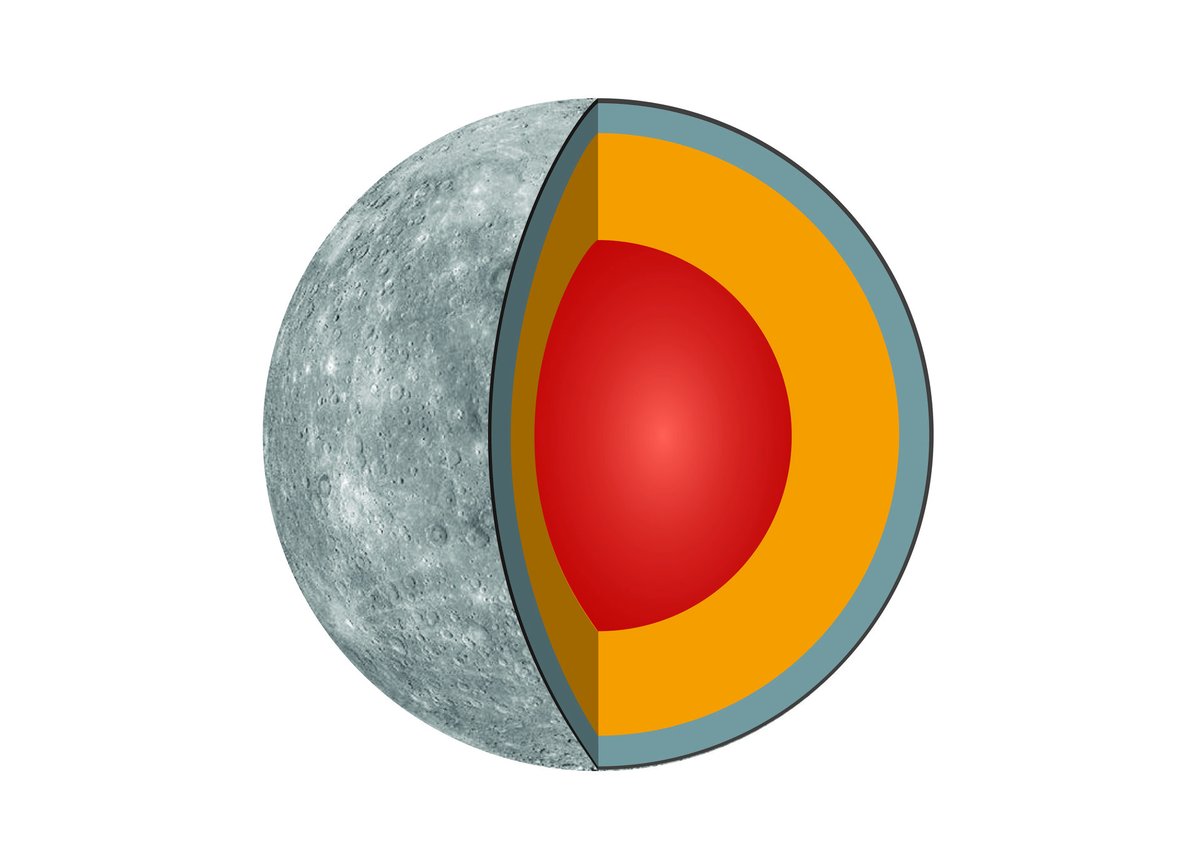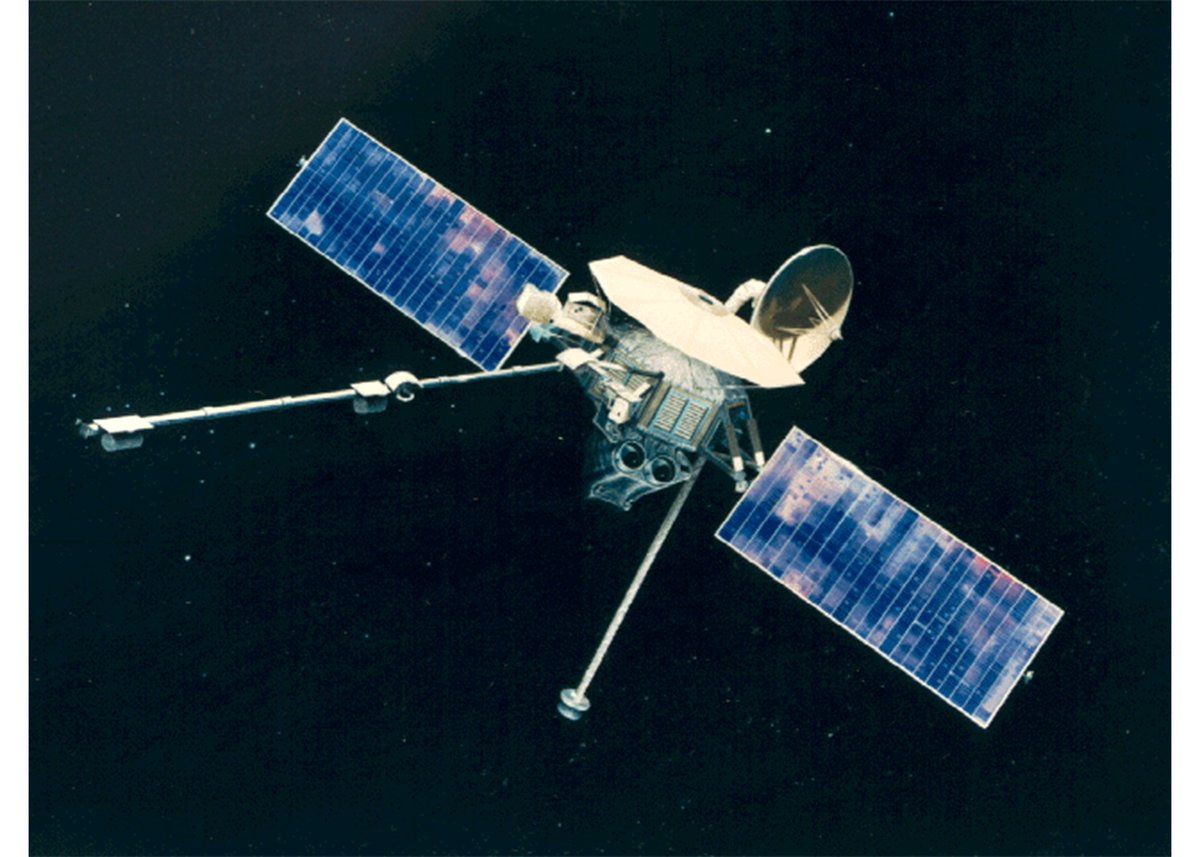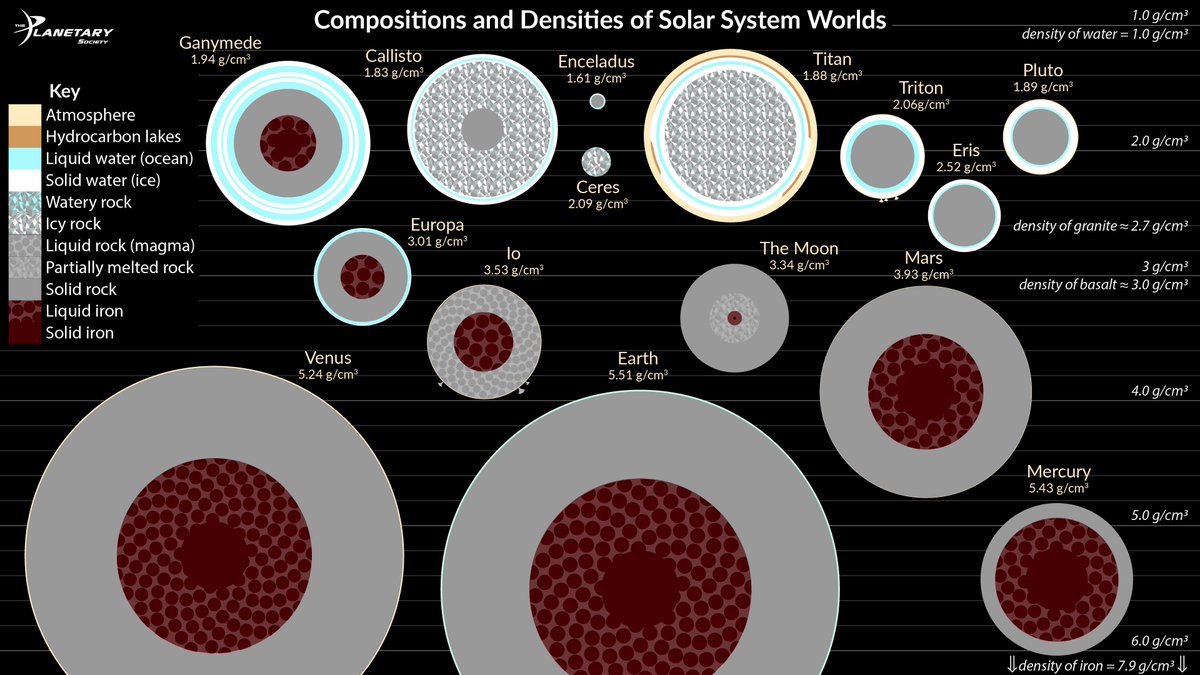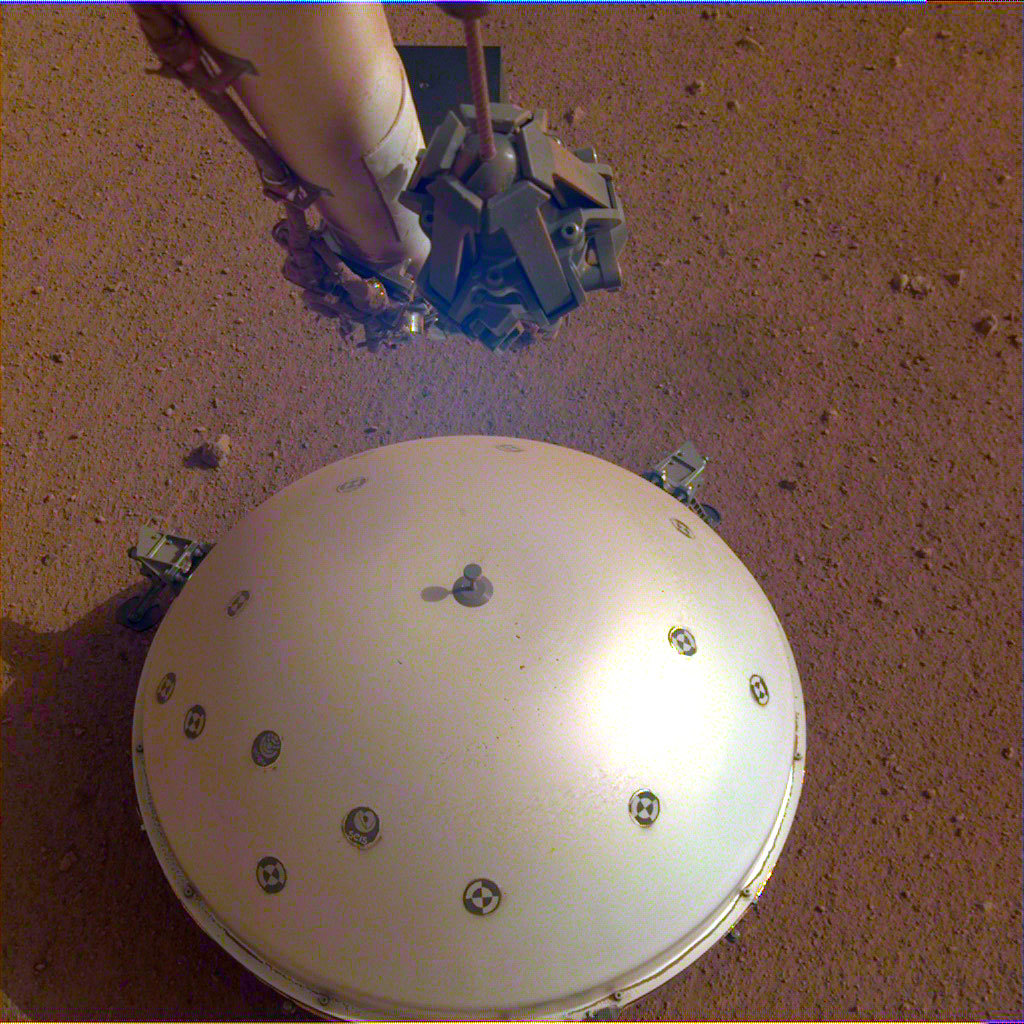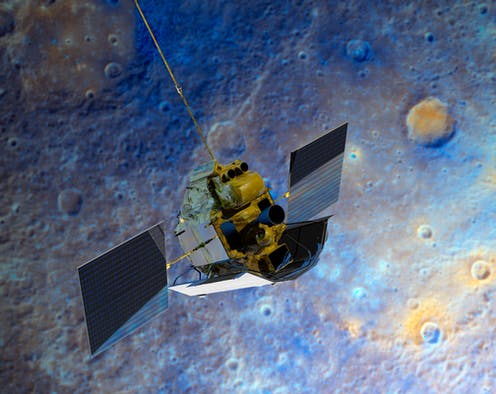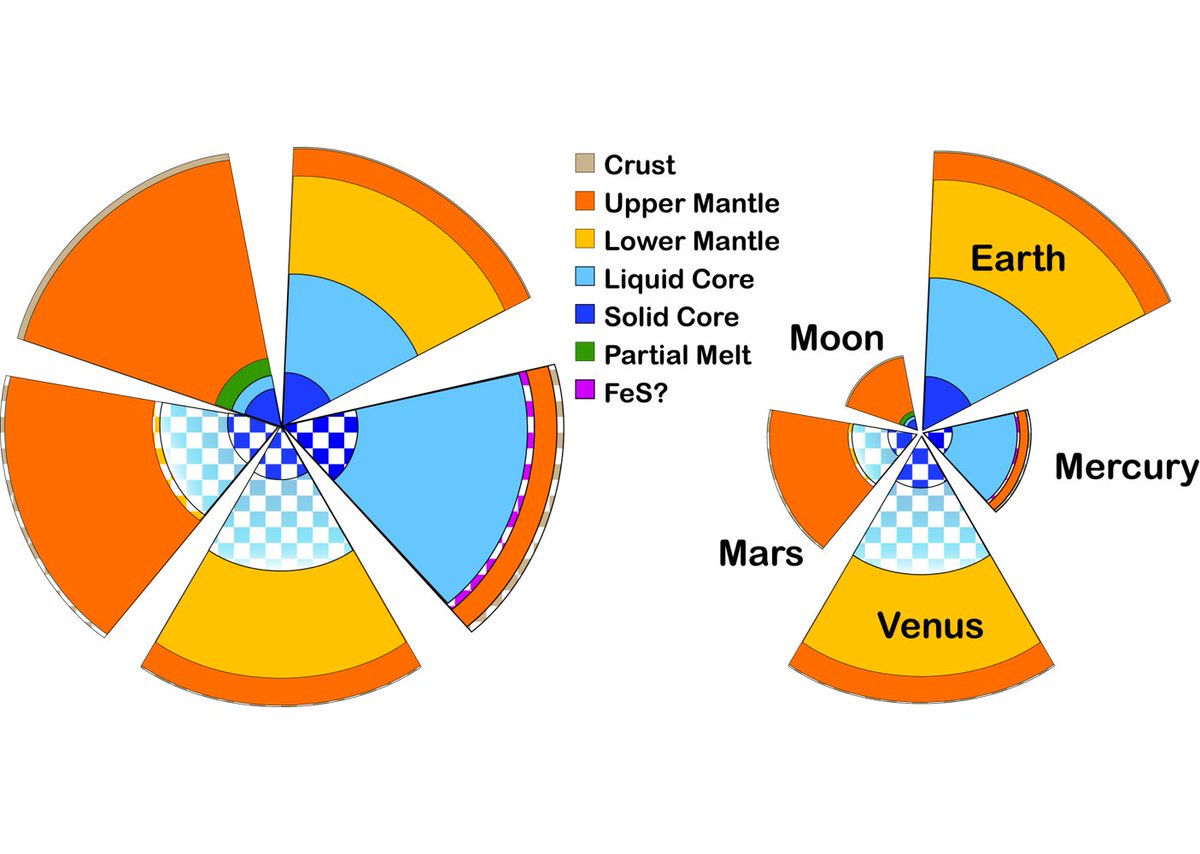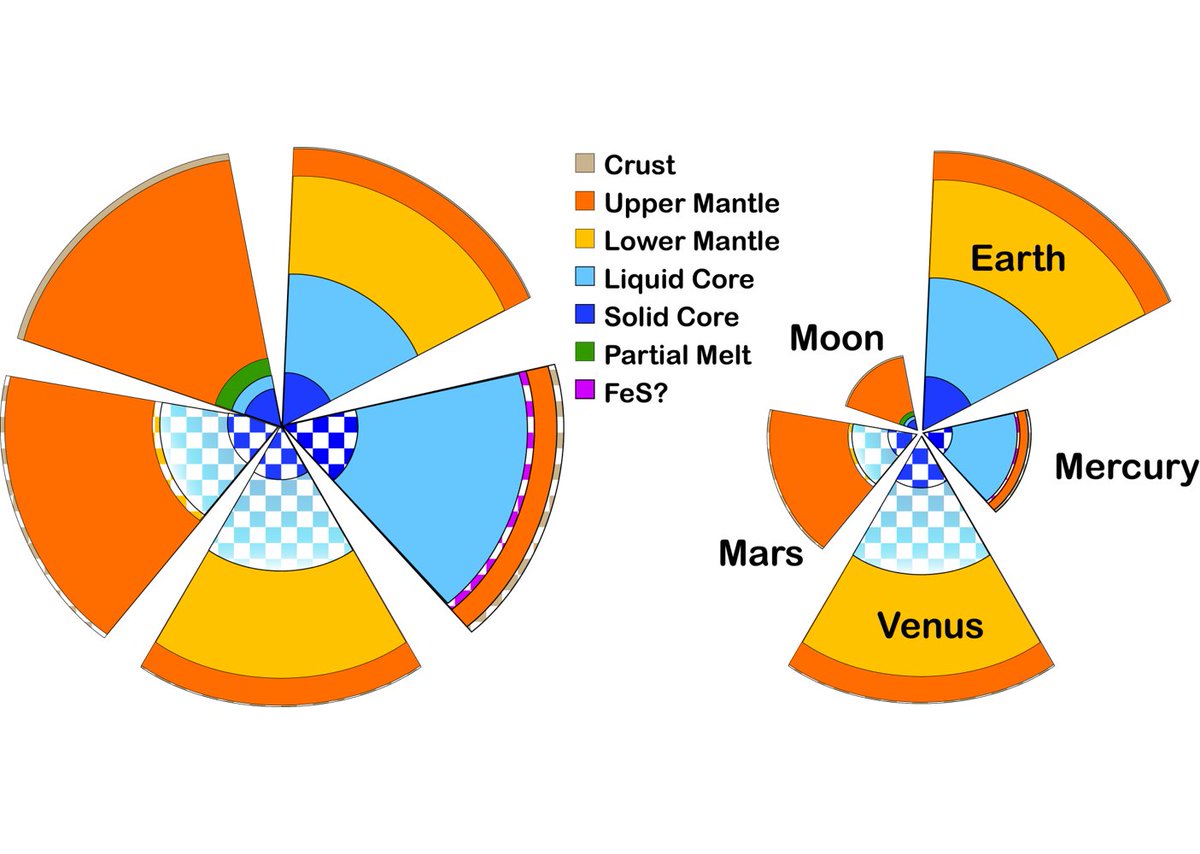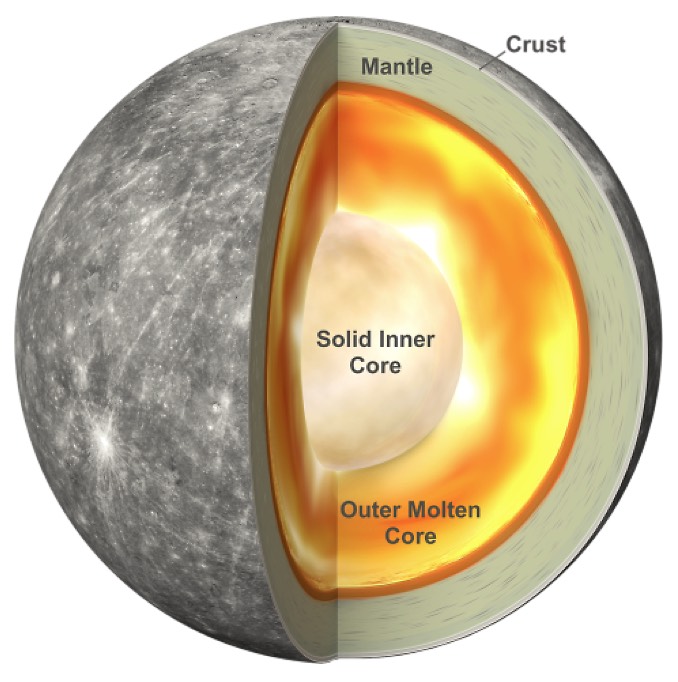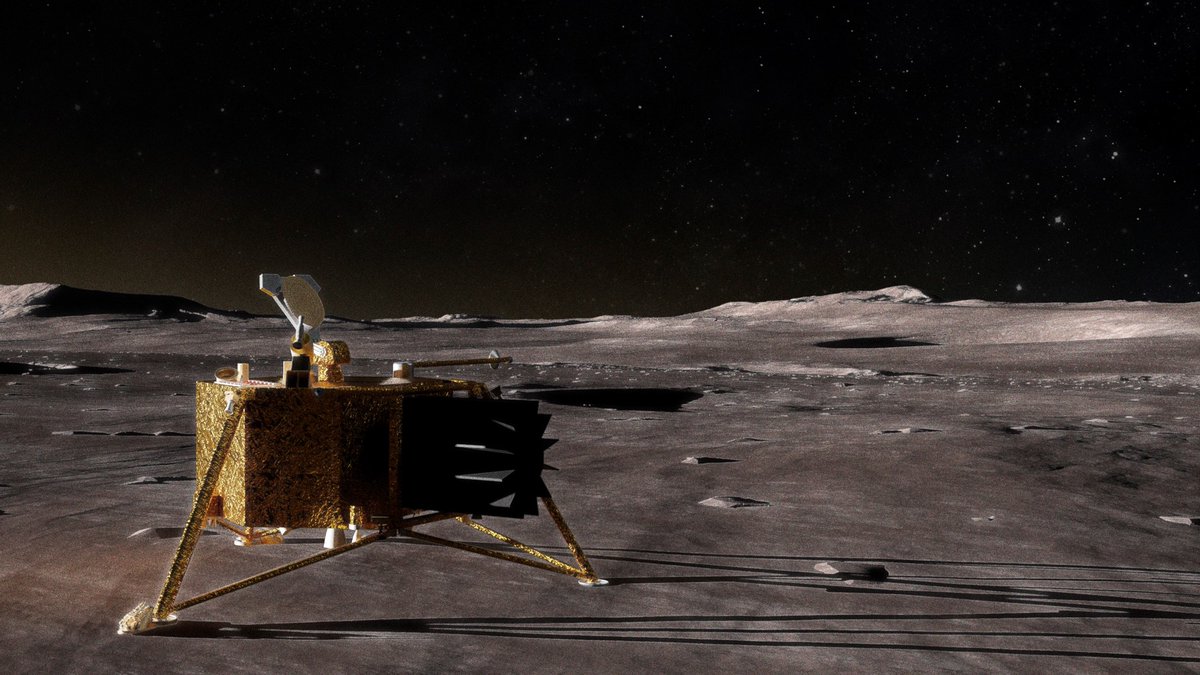Did you know... that Mercury is basically a big ball of gooey iron wrapped in a thin and crunchy rock shell? How do we know that? &... is that the weirdest thing about its interior? With the upcoming #AGU20 Mercury sessions, a little thread. Image: ESA/NASA/JHU APL/CIW (1/n)
For most of the last 50 years, the best information about what Mercury's inside is made of came from the Mariner 10 spacecraft that made 3 flybys of the planet in 1974–5. Measuring the mass of the planet and its size led to its density. (2/22) Image: NASA
The avg density of a world is the result of both the materials that make it up & the pressures in the interior. Ice=low density, rock=medium, iron=high. Mercury is small (so low pressure), so high density = lots of iron, less rock. (3/22) Image: E. Lakdawalla/Planetary Society
Density is helpful, but we need more data to get the size and nature of things in the interior. On Earth, the Moon, and now Mars scientists use seismic waves from quakes traveling through the interior of a world to pin down the structure of a body. (4/22) Image: InSight/NASA/JPL
No seismometers at Mercury (yet!) but there are some special properties about how the planet spins and orbits around the Sun that let @MESSENGER2011 probe the interior better. (5/22)
Image: NASA/JHU APL/CIW (no Mercury thread is complete w/o a picture of MESSENGER)
Image: NASA/JHU APL/CIW (no Mercury thread is complete w/o a picture of MESSENGER)
By measuring the tiny differences in the strength of gravity from Mercury not being a perfect sphere (a bit squashed N-S, & a bit less so E-W), the orientation of its spin pole, & variations in spin rate it was possible to find that the core is (at least partially) liquid (6/22)
Measurements of the orientation and length of day variations (called librations) using Earth-based radar between Green Bank and Goldstone by @jeanlucmargot revealed the liquid state of the core before @MESSENGER2011's arrival. (7/22)
Image: Jean-Luc Margot
Image: Jean-Luc Margot
When combined with @MESSENGER2011's gravity data we learned that Mercury's core was larger than thought @ ~83% of the radius. The image compares Mercury with other planets/moons, by proportion on the left and to scale on the right. Checkered = most uncertain.(8/22) Image: @hauck
A curious possibility in some models was that there was a layer of solid FeS between Mercury's mantle and the liquid core. This matched chemical estimates of core too at the time. However, this idea is not consistent w/current gravity nor chemical models. (9/22) Image: @hauck
Since the end of @MESSENGER2011 a lot of work has gone into carefully analyzing the data, both the gravity and the movement of the surface as seen in laser altimetry and image data. (10/22)
Those analyses have suggested some possible differences in the orientation of the rotation axis (the obliquity), which is important for finding core size, among estimates from gravity (whole planet) & images/altimetry (just the surface), but within uncertainty. (11/22)
The most recent work, using data from when MESSENGER was very close to Mercury at end of mission also has smaller uncertainties and has been used to estimate inner core size, including the possibility it is relatively large Image: Antonio Genova (12/22)
And this is where things get interesting. When data can be fully analyzed and questions looked at from multiple perspectives and datasets... that's when the new questions arise. Thus, new research we are seeing at #AGU20 (13/22) https://agu.confex.com/agu/fm20/meetingapp.cgi/Session/109398
For example, Dumberry is delving into questions about what the different estimates of the tilt of Mercury's axis might mean and the role an inner core would play. (14/22) #AGU20 https://agu.confex.com/agu/fm20/meetingapp.cgi/Paper/735194
and @GSteinbruegge takes a detailed modeling dive into those recent gravity data, focusing on what they mean for the temperatures and minerals inside Mercury and if they are compatible with other data #AGU20 (15/22) https://agu.confex.com/agu/fm20/meetingapp.cgi/Paper/672886
. @ReguSphere applies another dataset, MESSENGER's magnetic field data, to the problem of constraining Mercury's interior, focusing on a kind of current that passes through the interior (16/22) #AGU20 https://twitter.com/ReguSphere/status/1333924624472682498?s=20
In order to really understand Mercury's core, it is important to know potential material properties. Berrada measures how well heat moves through Fe–Si alloys and then models when the core might have convected by cooling alone. (17/22) #AGU20 https://agu.confex.com/agu/fm20/meetingapp.cgi/Paper/665295
How Mercury's core cools is important how it generates a magnetic field, which is what @planet_peterson focused on, particularly its ancient dynamo (18/22) #AGU20 https://twitter.com/ExploreMercury/status/1336895164812570625?s=20
The cooling of the core, depends on how all of Mercury planet cools (as does the rate of volcanism, tectonics, etc), which is what Bose models in their poster (19/22) #AGU20 https://agu.confex.com/agu/fm20/meetingapp.cgi/Paper/698944
On top of all these kinds of studies of the interior, there are new data to come from the @BepiColombo mission to Mercury and @JBenkhoff is giving an update on that mission (20/22) #AGU20 https://agu.confex.com/agu/fm20/meetingapp.cgi/Paper/735306
Looking farther into the future, @cratergirl shares a concept for a Mercury Lander prepared for the Decadal Survey that would provide detailed information about what the planet is made of and how it operates (21/22) #AGU20
Image: JHU/APL https://agu.confex.com/agu/fm20/meetingapp.cgi/Paper/748242
Image: JHU/APL https://agu.confex.com/agu/fm20/meetingapp.cgi/Paper/748242
And that's it for this Mercury interior thread. End. (22/22)

 Read on Twitter
Read on Twitter